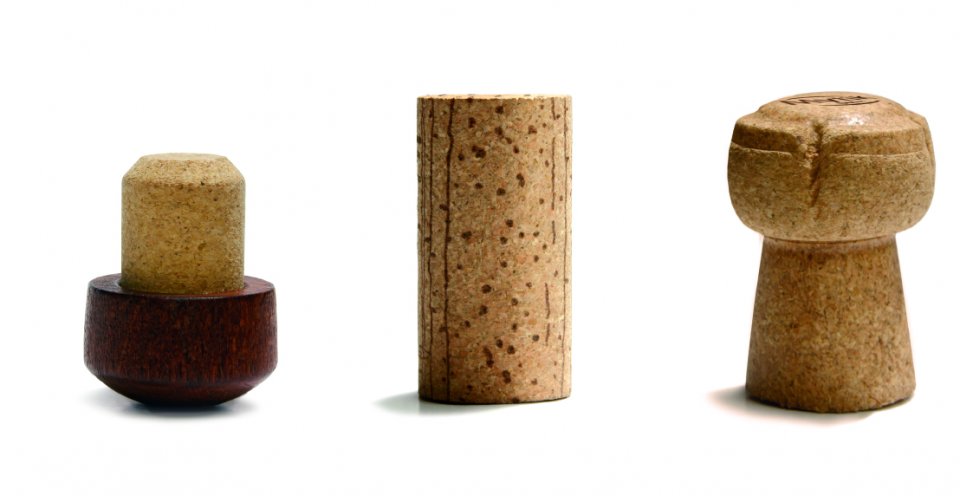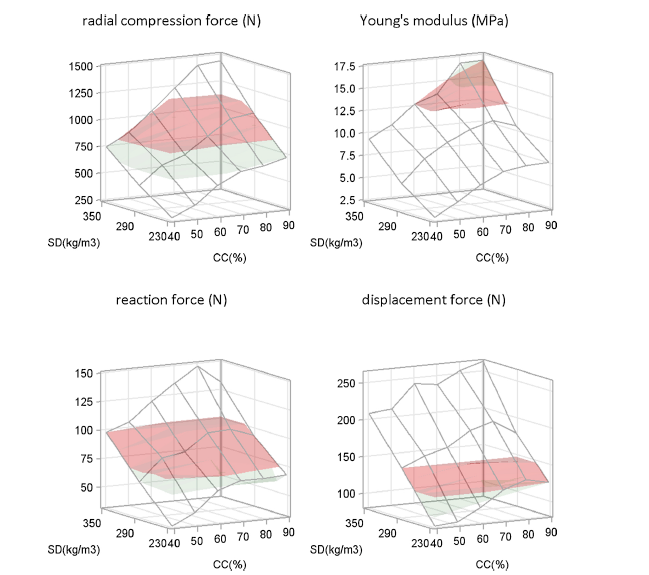
The objective of this study is to determine the proportion of cork that micro-agglomerated and synthetic cork stoppers should contain to assure that their mechanical properties are similar to those of a natural cork stopper. The properties that characterize the mechanical behaviour of the stoppers in the corking and uncorking operations are: compression, relaxation and extraction.
Most of the wines exported in the world are bottled wines (72%) and it is estimated that between 65-70% of the latter are sealed with stoppers made from cork, while the rest are sealed with synthetic cork or plastic stoppers (15-18%) or metal screw tops (15-18%). An adequate seal should hardly interact with the wine and should properly regulate the gas exchange with the external atmosphere, ensuring excellent preservation and gradual evolution of the wine in the bottle. To evaluate the behaviour of wine bottle stoppers; chemical, sensorial, mechanical and physical approaches can be used. This study addresses the issue from a mechanical perspective.
To test the mechanical behaviour, different types of stoppers (natural cork stoppers, micro-agglomerated cork stoppers composed of different percentages of cork and synthetic stoppers) were compared. The compression force and reaction force data revealed similarities between natural cork stoppers and micro-agglomerated cork stoppers with cork content from 40 to 90%, associated with differences in stopper densities. However, the results for displacement force pointed to similarities within a smaller range of cork percentages. The mean values of these parameters for natural cork stoppers were similar to those for micro-agglomerated cork stoppers with 60–90% cork content. Accordingly, cork percentage together with stopper density, provides a better indicator of the mechanical behaviour of a micro-agglomerated cork stopper.
The mechanical behaviour of micro-agglomerated cork stoppers depends more on cork content than on binder content. These results highlight the versatility of cork-based stoppers from a mechanical perspective. Depending on the formulation in the design of micro-agglomerated cork stoppers, their mechanical characteristics may be poorer, equal to or better than those of natural cork stoppers (see Figure 2). The micro-agglomerated cork stoppers tested in this study are composed of cork granulate and binder alone, with no other auxiliary products so that the effect of cork percentage on the mechanical behaviour of the stoppers can be assessed correctly.
TTo extrapolate the results of this study to other cork-based stoppers, the specific characteristics of the stoppers tested in the study should be taken into account, as should the characteristics of the mechanical tests. For instance, among the variables that could affect the mechanical behaviour of the stoppers are (i) the size of the cork particles; (ii) the presence of micro-spheres or other additives in the composition of the stoppers; (iii) the duration of the sealing period; (iv) different humidity values. In this study we tested the evolution of the relaxation force over the first 24 h after corking, although it would be of interest to extend this period. Another important factor to consider is hydration; in this study all stoppers were acclimatized at 20 °C and 65% relative humidity prior to testing.
Further research is needed in order to complete a more in-depth analysis of the behaviour of different types of stoppers. Moreover, other aspects such as sensorial and chemical factors must be considered.
Mariola Sánchez-González, msanchez@inia.es, INIA
Further information
Sanchez-Gonzalez, M., & Pérez-Terrazas, D. (2018). Assessing the percentage of cork that a stopper should have from a mechanical perspective. Food Packaging and Shelf Life, 18, 212-220.
(C) DIAM

Fig. 2. 3D surface plots showing the relationship among cork percentage, stopper density and radial compression force, Young’s modulus (elasticity), reaction force and displacement force in micro-agglomerated cork stoppers. Surfaces formed by average values of each parameter for high quality natural cork stoppers are highlighted in red, while surfaces formed by average values of each parameter for low quality natural cork stoppers are highlighted in green (Sánchez-González and Pérez-Terrazas, 2018)
